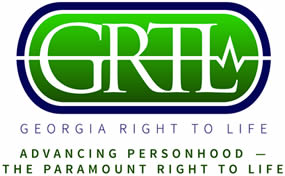In vitro fertilization (IVF) isn’t a topic that often crops up in pro-life circles, but it’s important to highlight this as an issue that affects the movement directly and has a profound impact on the way we view the dignity and value of every human life, both in and outside the womb.
IVF comes with a unique set of risks. Many people have replaced the truth about IVF’s damaging and destructive processes with the widely-accepted notion that conceiving via IVF helps couples with fertility problems, promotes the growth and importance of a family unit, and finally allows struggling parents to enjoy the blessing of a child or children.
And it can do all those things.
But it doesn’t come without a cost. And not just its hefty $5,000 – $25,000 price tag.
Here are some talking points on this controversial issue that tend to slip through the cracks:
- IVF promotes the destruction of “extra” human embryos – or developing humans, in layman’s terms.
IVF usually entails the creation of multiple human embryos to ensure a greater chance of successful implantation – although recent research has found that embryonic mortality rates decrease when only one embryo is introduced at a time. These human embryos are then screened for genetic disorders, handicaps and sometimes even a particular gender. The “undesirable” embryos are killed. Normally, an IVF practitioner transfers around four of the selected embryos into a woman’s uterus. If more than one (or two) successfully implant, a physician will selectively abort (kill) the remaining embryos (Nadya “Octomom” Suleman refused this “embryonic discarding”, resulting in her delivering octuplets). This selective mentality leads to the death of little humans based on their gender, physical and mental handicaps, and how many exist simultaneously. This segues into the second point:
- IVF often results in the conception of multiples, which in turn results in selective abortions after implantation, as well as a dangerous situation for both mother and children when the number of children who are implanted is unnaturally high.
The “Octomom” was referenced above, who refused to allow her IVF practitioner to discard of “extra” fertilized embryos selectively. Kate Gosselin of Jon and Kate Plus 8 fame had a similar situation, and, thankfully, both mothers refused to kill any of their children, thus bearing octuplets and sextuplets, respectively. Suleman and Gosselin by no means followed the status quo when it came to multiple implantations resulting from IVF. All too often, the unchosen embryos are destroyed, thrown out, or washed down the sink. Additionally, a mother pregnant with multiple children is naturally put in the category of high-risk pregnancy. Therefore, even if a pro-life woman refusing selective abortion carries all IVF-created children, this unnaturally creates a dangerous situation for herself and her babies.
- Prepping for IVF requires significant alterations to hormone levels, which can lead to or increase the risk of health problems.
Many women need to undergo hormone therapy before and during IVF to prepare their bodies to accept the implanted human embryo. Estrogen levels are usually boosted during IVF (as well as natural pregnancies) to strengthen the endometrial wall of the uterus. There are a slew of chemical-related side effects that come with a number of the hormone therapies used, but simply altering hormone levels alone can come with consequences. Having high levels of estrogen can cause irregular periods, depression, uterine fibroids, osteoporosis, memory loss, and infections.
- Advances with IVF allow for parents to “screen out” embryos with genetic disabilities and undesirable traits. ”Screening out” these human embryos results in a “Gattica-like” society.
With all this in mind, the pro-life movement does not want to stamp out hope for couples struggling to conceive. As always, all people – born or pre-born – deserve respect, dignity and love.
One major breakthrough that exists in monitoring and maintaining women’s reproductive health is NaProTECHNOLOGY (Natural Procreative Technology), a medical and surgical alternative that has been proven effective to treat infertility, ovarian cysts, polycystic ovarian disease, repetitive miscarriage, and hormonal imbalances among other health complications.
NaProTECHNOLOGY monitors women’s hormonal events during the menstrual cycle and identifies when gynecological systems operate abnormally, identifying the problems which may be able to be corrected.
State-of-the-art advancements like this along with education and resources will go a long way in maintaining reproductive health in women and protecting the rights of the preborn. And let’s not forgot the beautiful, loving and moral option of adoption. Both NaProTECHNOLOGY and adoption provide ethical alternatives to the dangers and ethical problems with IVF.
(Adapted from Students for Life’s article, “In Vitro Fertilization”)
